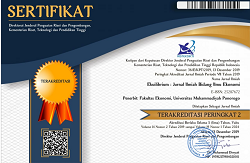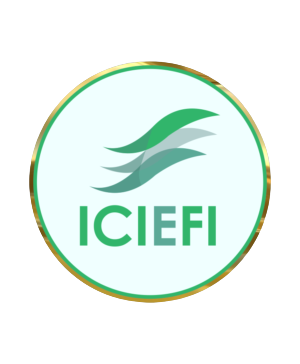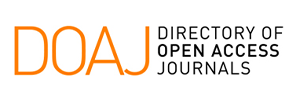SMEs Performance and Halal Food Supply Chain
DOI: 10.24269/ekuilibrium.v18i1.2023.pp62-71
Abstract
The food and beverage business has a strategic role in the economy and food security, where 90% of national food products are provided by SMEs. SMEs also control 99.9% of the industrial market, absorb 97% of the national workforce and contribute 60% to GDP. On the other hand, food and beverage SMEs have the lowest resistance to the COVID-19 pandemic, so efforts need to be made to strengthen organizational resilience to the uncertainty of the business environment. This study aims to describe the food and beverage business supply chain, analyze the level of business efficiency and analyze the key variables of the performance of food and beverage SMEs in Surakarta City after the covid-19 pandemic. This research uses supply chain analysis, efficiency analysis and structural analysis. Supply chain analysis uses descriptive qualitative analysis. Efficiency analysis uses a non-parametric approach whose defeat uses DEAP. Analysis of determining the key variables of SME performance using structural analysis. The study used 20 variables to be processed into key variables for the performance of SMEs. The research involves academia, business, government, and the community (ABGC) in FGDs to obtain a comprehensive study. Data analysis using structural analysis using MICMAC.The results of the study explain that the performance of food and beverage SMEs was influenced by the product supply chain, there are still many food and beverage businesses that have not yet reached the level of efficiency, either in resource allocation or in achieving output. The results also explain 5 key variables out of 20 variables that are used to determine the main variables that have a high influence in supporting business performance, namely achievement-oriented, effective marketing, optimism, market understanding, and risk management.
Keywords
References
- Abdullah, F., Hamali, J., Deen, A.R., Saban, G. and Abdurahman, Z. (2009), “Developing a framework of success of Bumiputera entrepreneurs”, Journal of Enterprising Communities: People and Places in the Global Economy, Vol. 3 No. 1, pp. 8-24.
- Ambrosini, V., & Bowman, C. (2009). What are dynamic capabilities and are they a useful construct in strategic management? International Journal of Management Reviews. https://doi.org/10.1111/j.1468- 2370.2008.00251.x
- Badan Pusat Statistika. (2021). Statistik Indonesia 2020 Statistical Yearbook of Indonesia 2020. Statistical Yearbook of Indonesia, April, 192
- Benjumea-Arias, M., Castañeda, L., and ValenciaArias, A. (2016). Structural analysis of strategic variables through MICMAC use: Case Study. Mediterranean. Journal of Social Sciences, 7(4), 11–19. doi:10.5901/mjss.2016.v7n4p11.
- Chow, W. S., Madu, C. N., Kuei, C. H., Lu, M. H., Lin, C., & Tseng, H. (2008). Supply chain management in the US and Taiwan: An empirical study. Omega, 36(5), 665-679
- Collewaert V, Filatotchev I, and Khoury TA. 2021. The View of Angels from Above: Angel Governance and Institutional Environments. Academy of Management Perspectives. 2021: 35 (1).
- Derwik, P., Hellström, D., & Karlsson, S. (2016). Manager competences in logistics and supply chain practice. Journal of Business Research, 69(11), 4820-4825.
- Elam, A. and Terjesen, S. (2010), “Gendered institutions and cross-national patterns of business creation for men and women”, The European Journal of Development Research, Vol. 22 No. 3, pp. 331-348.
- Fahrika A.I., dan Roy, J. 2020. Dampak pandemi covid 19 terhadap perkembangan makro ekonomi di indonesia dan respon kebijakan yang ditempuh. I N O V A S I - 16 (2), 2020; 206-213
- Giyanti, I., & Indriastiningsih, E. (2019). Impact of Halal Certification on The Performance of Food Small Medium Enterprises. Jurnal Ilmiah Teknik Industri (JITI), 18(2), 116–123. https://doi.org/10.23917/jiti.v18i2.7242
- Gupta, V.A. (2014), “Gender differences in evaluation of new business opportunity: a stereotype threat perspective”, Journal of Business Venturing, Vol. 29 No. 2, pp. 273-288.
- Hadi, S. Pengurangan Risiko Pandemik Covid-19 Secara Partisipatif: Suatu Tinjauan Ketahanan Nasional terhadap Bencana. The Indonesian Journal of Development Planning, 2020: IV (2)
- Hamze Mousavi, Samira Jalilvand, Shahdokht Sohrabi Sani, Jewell Anne Lee Hartman, Marek Grabowski, 2020. Electronic properties of different configurations of double-strand DNA-Like nanowires, Solid State Communications, Volume 319, 2020, 113974, ISSN 0038-1098, https://doi.org/10.1016/j.ssc.2020.113974.
- Isa, M., Wajdi, M.F, Mabruroh, Hayati, S.F.N., Kamarulzaman, N.H., 2021. Sustainability of Rice Business in Flood-Prone Areas. Journal of Environmental Research, Engineering and Management Vol. 77 / No. 4 / 2021 pp. 6–18 DOI 10.5755/j01.erem.77.4.28096
- Isa, M dan Mangifera, L. (2019). Continuous Flood Risk Reduction on MSMEs: Implementation of Mactor Program. Economic Journal of Emerging Markets, 11(1), 113–121.
- Isa M, Fauzi A, Susilowati I. Flood risk reduction in the northern coast of Central Java Province, Indonesia: An application of stakeholder's analysis. Jàmbá: Journal of Disaster Risk Studies. 2019: 11(1). https://doi.org/ 10.4102/jamba.v11i1.660
- Mafruhah I, Supriyono, Mulyani NS, Istiqomah N. Causality Between Tourism Industry Development and the Ecological Sustainability In Marine Environment: A Convergence and Divergence among Stakeholder With Mactor Analysis. International Journal of Energy Economics and Policy, 2020: 10(4)
- Mangifera, L., & Mawardi, W. (2022). Digital Transformation and Its Impact on Financial Performance: in the Food and Beverage Small Business Sector. 49–61.
- Mangifera, L., Wajdi, F., Amalia, F., & Khasah, A. U. (2022). The Role of Digital Innovation in SMEs: A Financial Performance Perspective. Jurnal Manajemen Universitas Bung Hatta, 17(02), 157–170.
- Narula, S., Pal, S., Saini, V., Saxena, P., Goyal, A., & Yadav, M. (2018). Role of TQM in Sustained Business Performance in Indian Automotive Supply Chain. In Harnessing Human Capital Analytics for Competitive Advantage (pp. 121-143). IGI Global.
- Nisa, A. A. K., Subiyanto, S. and Sukamta, S. 2019. Penggunaan Analytical Hierarchy Process (AHP) Untuk Pemilihan Supplier Bahan Baku, JSINBIS (Jurnal Sistem Informasi Bisnis), vol. 9, no. 1, pp. 86-93, Jun. 2019. https://doi.org/10.21456/vol9iss1pp86-93
- Novitasari, M. (2019). Optimalisasi Potensi Perbankan Syariah di Indonesia bagi UMKM Halal dalam Mendukung Sustainable Development Goals. Majalah Ekonomi, 24(1411–9501), 49– 58. Retrieved from https://jurnal.unipasby.ac.id/index.php/majalah_ekonomi/article/view/1902
- Portillo-Tarragona P, Scarpellini S, Moneva JM, Valero-Gil J, Aranda-Usón A. Classification and measurement of the firms’ resources and capabilities applied to ecoinnovation projects from a Resource Based view perspective. Sustainability (Switzerland). 2018: 10(9).
- Resti, I.L.V. and Monika, A.K., 2020. The Potential Of Creative Economy Export In 2019. Jurnal Ekonomi dan Pembangunan Vol 28, No. 1, 2020, page 29-40
- Tatiana, Andreeva and Ritala, P. 2016 What are the sources of capability dynamism? Reconceptualizing dynamic capabilities from the perspective of organizational change Baltic Journal of Management, Vol. 11 Issue: 3, pp. 238-259
- Schreyögg, G., and Martina, K (2007). How dynamic can organizational capabilities be? Towards a dual-process model of capability dynamization. Strategic Management Journal, 28, 913-933.
- Sharma, S.K., B. N. Panda, S. S. Mahapatra, and S. Sahu. (2011) Analysis Of Barriers For Reverse Logistics: An Indian Perspective.International Journal of Model Optimisation, 1(2): 101-106.
- Soesanto, H. (2021). Pemetaan Variabel-Variabel Pembentuk Indeks Daya Saing Daerah Menggunakan Metode MICMAC. Jurnal Kebijakan Pembangunan Daerah, 5(1): 1– 8.
- Teece, David. J., Gary Pisano, and Amy Shuen, Amy. 1997. “Dynamic capabilities and strategic management.” Strategic Management Journal 18: 509-533.
- Wang, Y., & Shi, X. (2011). Thrive, not just survive: Enhance dynamic capabilities of SMEs through IS competence. Journal of Systems and Information Technology,13(2), 200–222.
- Wu, Z.A. (2012), “Second-order gender effects: the case of US small business borrowing cost”, Entrepreneurship Theory and Practice, Vol. 36 No. 3, pp. 443-463.
- Wajdi MF, Isa M, Mangifera L. 2020. The Analysis of Business Vulnerability in Rice Supply Chain in the Flood Prone Areas. TEST Engineering & Managemen 2020 (82)
- Wajdi MF, Isa M, Mangifera L. 2020. Strategi Penguatan Inkubator Bisnis Dalam Pengembangan Usaha Kecil Dan Menengah. Daya Saing: Jurnal Ekonomi Manajemen Sumber Daya Vol. 22, No. 2, Desember 2020
- Zimmer, T.W. and Scarborough, N.M. (2006), Essential of Entrepreneurship and Small Business Management, Prentice Hall of India Pvt.Ltd, New Delhi.
Refbacks
- There are currently no refbacks.

This work is licensed under a Creative Commons Attribution-ShareAlike 4.0 International License.













